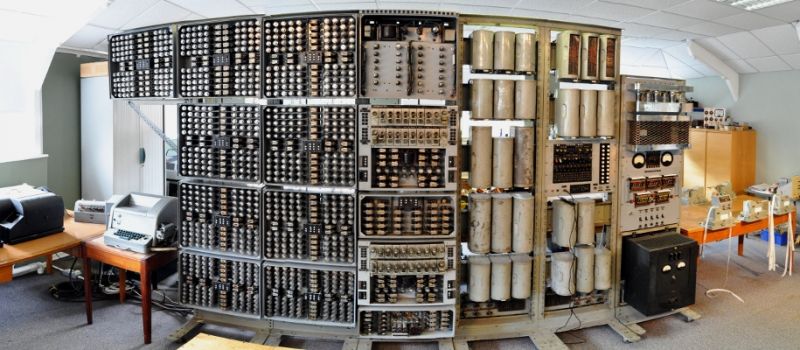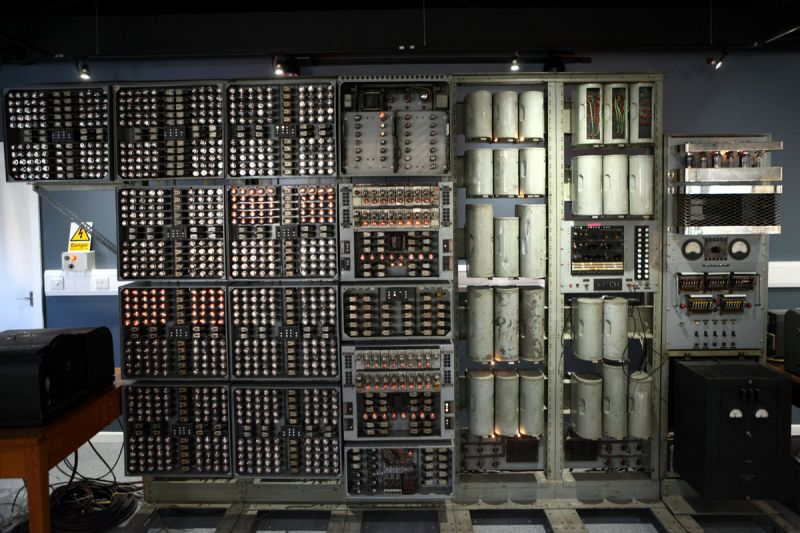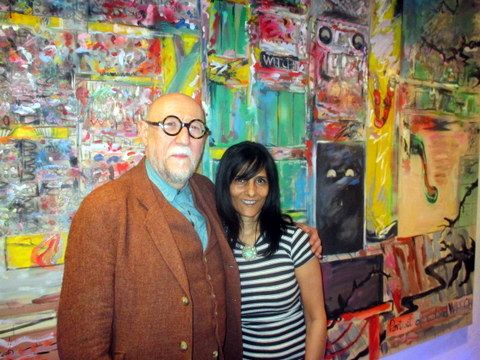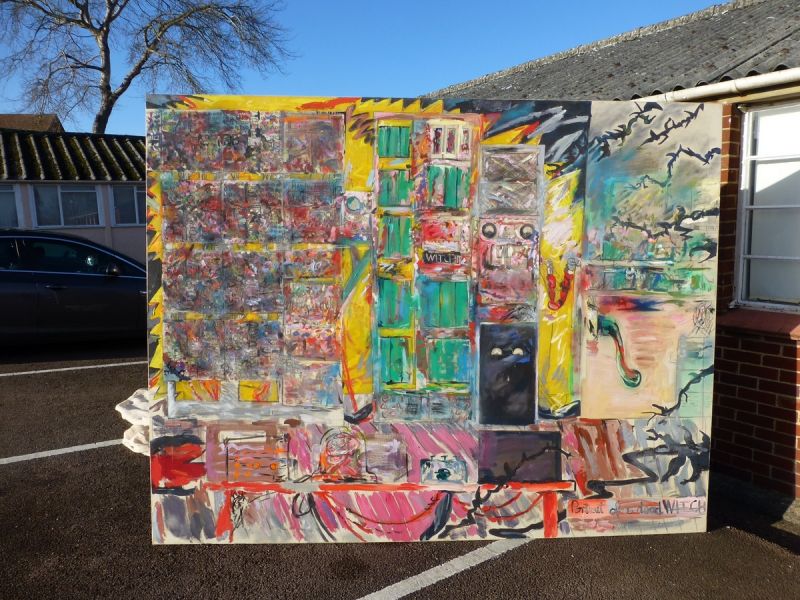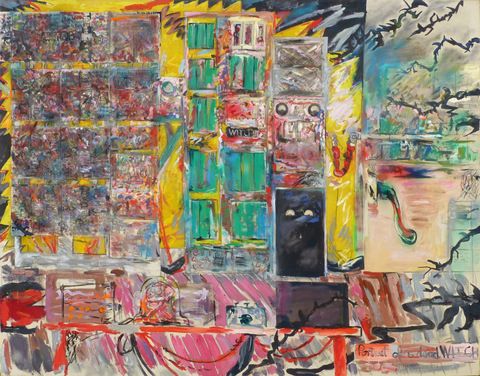Three Witches exhibition
/Computer art takes on an unusual perspective at The National Museum of Computing in February as two huge and colourful paintings created three decades apart are displayed near their original inspiration – the WITCH, the world’s oldest working digital computer.
The Three Witches – two paintings and a computer -- will be under one roof for the month of February, with a special viewing and talk on 15 February 2018 by the computer historian who rediscovered the computer, the restorer whose team brought it back to life and the artist who was twice inspired by it 35 years apart. In the afternoon, there will also be a half-term painting activity for youngsters.
Long before the term computer art had become mainstream, the Harwell Dekatron / WITCH computer was built at Harwell in Oxfordshire in 1951. It was then one of about twelve computers in the world and unlike other machines of that vintage, led a charmed life, dodging the scrapheap on three occasions.
In one of its reincarnations, as a static museum exhibit in 1983, it inspired the creation of the almost life-size Portrait of a Dead WITCH by artist John Yeadon. The painting was a subversive and ironic view of computer-generated art that was then becoming fashionable.
As the decades passed, both the computer and the artwork disappeared from public view. The computer was rediscovered by Kevin Murrell in pieces in a store room in 2009. He arranged for it to be brought to The National Museum of Computing where a team led by Delwyn Holroyd skilfully restored to full working order in 2012.
Then the existence of the extraordinary 1983 Portrait of a Dead WITCH came to light -- but it had gone missing. A nationwide search by the museum and the artist led to its rediscovery in a café-bar in Manchester in 2016.
Thrilled by its re-emergence and by the sight of the ‘dead’ WITCH working, Yeadon was inspired to create another painting: It’s Alive! Harwell Dekatron WITCH.
Today the world’s oldest working digital computer and its two paintings can be seen together for the first time – and for one month only.
Three WITCHES exhibition
All February 2018 as per Plan Your Visit
WITCH Takeover event for youngsters
Three faces of the WITCH – evening talk
Notes To Editors
The Harwell Dekatron /WITCH computer
Occupying an area the size of a living room wall and weighing a couple of tonnes, the WITCH, with its 828 flashing dekatrons (valves or tubes) was first operational in 1951 at Harwell in Oxfordshire. When it became obsolete there in 1957, it was won in a competition by the Wolverhampton and Staffordshire College of Technology where it was used as the Wolverhampton Instrument for the Teaching of Computation from Harwell (hence its later name: the WITCH). In 1973, it was recognised by Guinness World Records as "the world's most durable computer" and was again retired, this time to the Birmingham Museum of Science and Industry. When that Museum closed in 1997, the computer was put into storage, but was rediscovered by TNMOC in 2009, restored in 2012 and again recognised by Guinness World Records, this time as the world's oldest original working digital computer. Today, it mesmerises students on the TNMOC Learning Programme by displaying operations that modern computers keep secret.
The artist and the paintings
John Yeadon is a nationally recognised artist who has exhibited throughout Britain and abroad over 50 years. He created the Portrait of a Dead WITCH in 1983 and It’s Alive! Harwell Dekatron WITCH in 2017. Thanks to Kaldip Bhamber, The Portrait of a Dead WITCH is currently on loan from Jam Street Café Bar, 209 Upper Chorlton Road, Whalley Range, Manchester M16 0BH.
Media Contact
Stephen Fleming for The National Museum of Computing
+44 (0) 1635 299116
s.fleming@palam.co.uk



